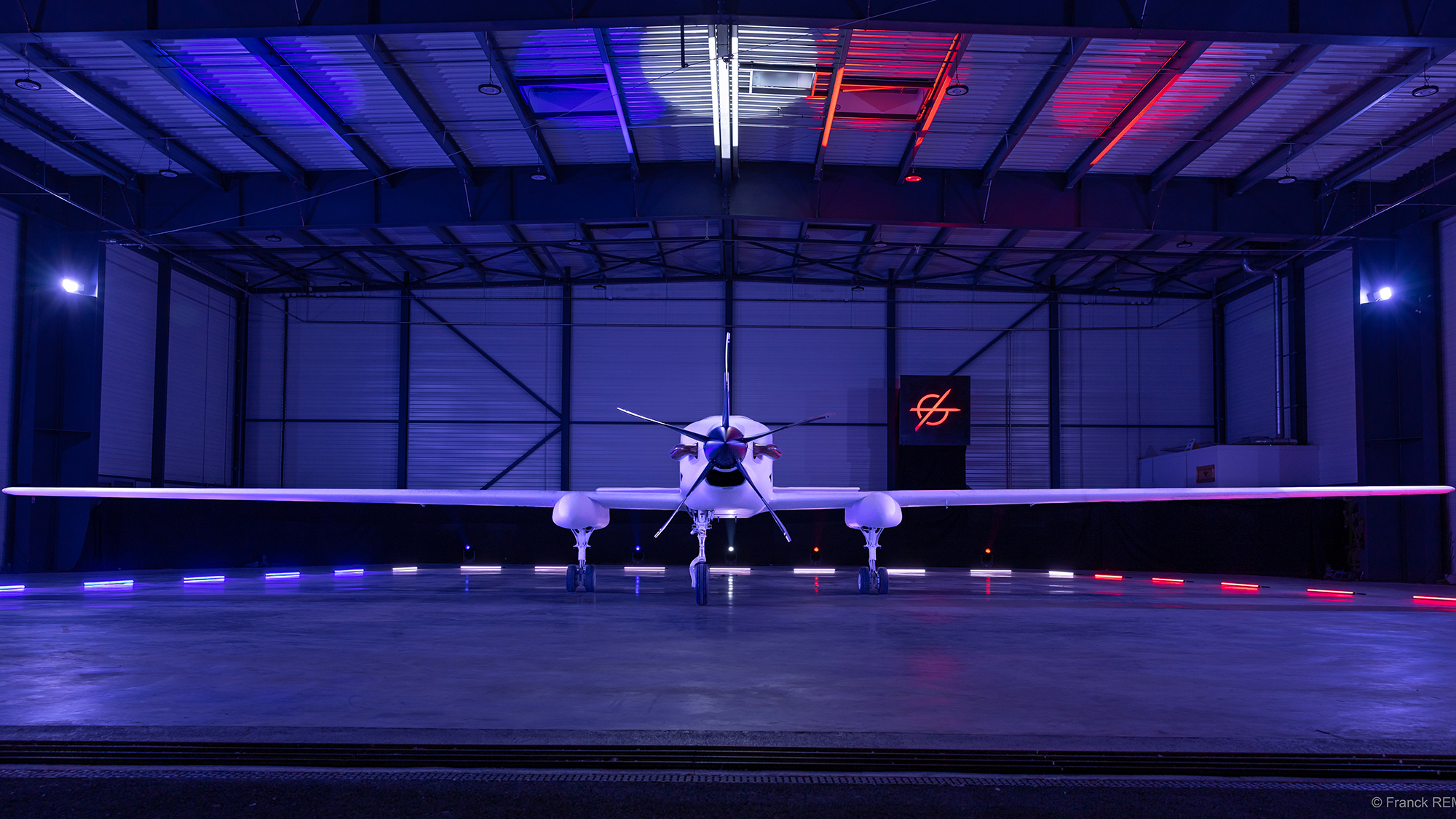

At the Paris Air Show this week, French defense contractor Turgis and Gaillard unveiled a new large drone: the AAROK. With over 24 hours of promised flight time, the drone is being heralded as Europe’s first Medium Altitude Long Endurance (MALE) drone. It’s a form of uncrewed aircraft that is attempting to fulfill a similar role as drones like the MQ-9 Reaper and other drones of the War on Terror. AAROK’s debut in Paris offers a chance to consider what role such a drone may have in the decades to come.
The AAROK weighs 5.5 tons, can cruise at speeds of up to 287 mph, and reach altitudes of 30,000 feet. It has a wingspan of 72 feet, longer than the 66 feet of the MQ-9 Reaper. The Reaper, famously used by the United States for surveillance and targeted strikes as part of the War on Terror, is a direct comparison point to the AAROK, and already in service with the French military. The AAROK can carry up to 6,000 pounds of payload, of which half can be weapons. As promised, the AAROK is slightly faster than the Reaper, although with a lower service ceiling at present.
“We are proud to introduce our first prototype of remotely piloted aircraft, the AAROK unmanned aerial vehicle. Produced in our French factories, this UAV will meet the requirements of French and allies forces at a reduced cost, both in purchase and use,” said Fanny Turgis, president of Turgis and Gaillard Group, in a release.
What made the Reaper such a good fit for how the Pentagon used it is the way it combined powerful cameras, multiple missiles, and the ability to watch an area for targets for hours, with remote pilots and crews switching control of the vehicle mid-flight. In counter-insurgency warfare, where combat was dictated by looking for and tracking cells of insurgents operating in remote bases or moving in cities, the Reaper’s abilities shone, giving commanders enough information where they could feel comfortable making a kill order. (These orders did not, always, find the right targets, though the missiles certainly found people on the ground below.)
But the Reaper was built for a specific kind of environment, one where the drone could operate in the sky for long stretches without fear of being shot down by hostile aircraft, and at most only experience a minor risk from human-portable anti-air missiles. As the grinding conventional war in Ukraine has shown, while plane-sized drones can play some role in scouting and targeting, they struggle against dedicated anti-air defenses, and especially against hostile air forces.
This makes the AAROK a curious new entry into the familiar Reaper pattern, loaded with sensors and bristling with bombs and missiles. “AAROK stands out with its robust design, its ability to take off and land from rough fields and operate on all weathers conditions as well as its flight endurance (more than 24 hours) and maximized payload,” Turgis and Gaillard Group said in a release. In addition, the company emphasized the drone’s powerful camera, radar, and communications detection and transmission tools.
Turgis and Gaillard expect the AAROK to be useful for patrolling “Exclusive Economic Zones,” or swaths of ocean claimed by countries that typically extend beyond territorial waters. France has overseas territories in the Indian and Pacific oceans, where over 1.5 million French citizens live. The French embassy in Malaysia notes that 93 percent of France’s exclusive economic zone is located in the Indian and Pacific Oceans.
In addition to scouting and surveilling existing French claims to the ocean, Turgis and Gaillard pitch the AAROK as an important “asset for operational dominance (intelligence, reconnaissance, and support for high intensity strikes even in contested areas),” suggesting that the drone’s design is useful and durable enough to make it useful in the face of hostile defenses. It can also function as a communications node, with the drone operating as an airborne relay between forces over distance, ensuring commands and information get from headquarters to forces in the field.
At present, the AAROK is a promise more than a reality, with Patrick Gaiilard, director general of the company, telling Breaking Defense that the prototype “was finished just a few weeks ago and hasn’t yet flown.”
Still, the idea is a compelling pitch for not just the French military but other countries France might sell weapons to, like partner states in Africa or NATO allies. The AAROK can perform much of the missions expected of a legacy drone like the Reaper, but is built on modern tech, with an understanding of modern threats baked in. Part of that understanding comes with cost: the AAROK is pitched as cheaper than other similar vehicles, which makes it both more accessible to smaller militaries, and also somewhat more expendable for militaries with means.
As the aircraft is still in the prototype stage, it remains to be seen how much of the promise can actually be delivered. But the promise itself is compelling, a drone capable of both counter-insurgency and anti-submarine operations, built to be used and lost if needed.
